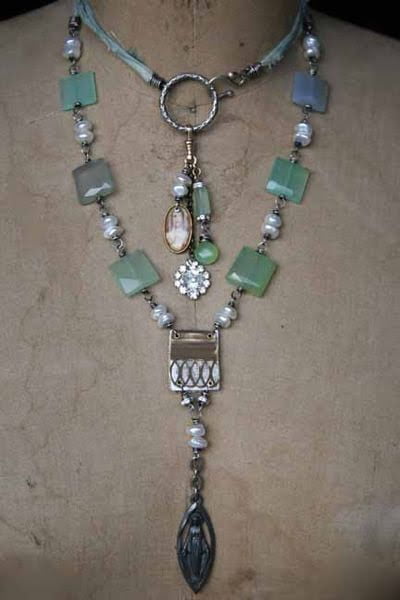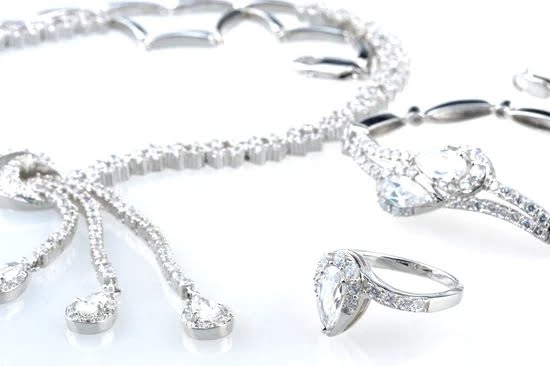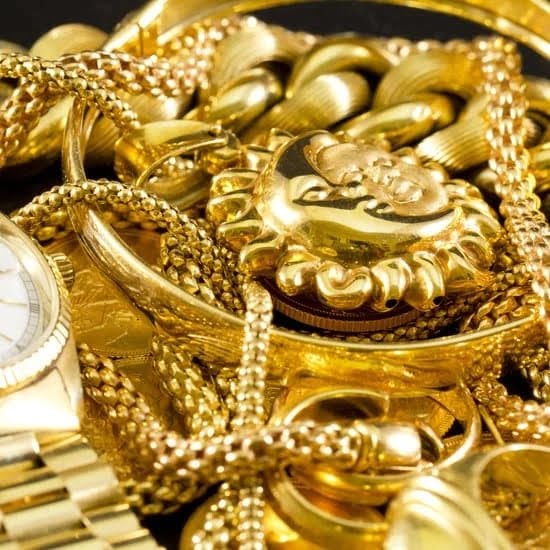The history of jewelry charms dates back to ancient civilizations, where these small trinkets held significant meanings and symbolisms. From amulets to talismans, charms have evolved through the years, reflecting the changing trends and beliefs of different eras. This section will delve into the origin and evolution of jewelry charms, exploring their role in various historical periods and their enduring allure in modern times.
Throughout history, charms have been cherished for their sentimental value and symbolic significance. From ancient cultures to the Victorian era and beyond, charms have been worn as personal adornments believed to bring luck, ward off evil spirits, or commemorate special events.
The Renaissance saw a resurgence of appreciation for charms as decorative accessories that reflected individual tastes and interests. As we explore the origins of jewelry charms, we will discover the diverse cultural influences that have shaped their designs and meanings over time.
In addition to examining the historical significance of jewelry charms, we will also explore their role in contemporary fashion and style. From traditional charm bracelets to trendy charm necklaces, these timeless accessories continue to fascinate and delight people around the world. Join us as we embark on a journey through the captivating history of jewelry charms, from ancient civilizations to modern-day allure.
The Ancient Origins of Charms
Charms are a popular form of jewelry with a rich and fascinating history. The practice of wearing charms dates back to ancient civilizations, where they were originally worn as amulets and talismans for protection and luck. The ancient origins of charms can be traced back to early humans who adorned themselves with items from nature such as shells, animal bones, and teeth in the belief that these objects held mystical powers.
In ancient Egypt, charms made from semi-precious stones, pottery, and metal were worn as a form of protection and to ward off evil spirits. These early forms of charms evolved into intricate pieces crafted with symbols and inscriptions that were believed to hold specific meanings and powers. Similarly, in ancient Rome, soldiers would wear amulets as talismans for protection during battle.
The use of charms as symbols of faith or luck continued throughout history, with different cultures incorporating their own unique designs and meanings into these pieces. It is this rich history of jewelry charms that has contributed to their enduring popularity and allure today.
| History | Importance |
|---|---|
| Charms date back to ancient civilizations | Charms provided protection and luck |
| Ancient Egypt used semi-precious stones for charms | Symbols and inscriptions held specific meanings |
| In ancient Rome, soldiers wore amulets for protection in battle | Various cultures incorporated their unique designs |
Charms in Ancient Civilizations
The history of jewelry charms dates back to ancient civilizations, where these small and intricate objects held significant symbolism and meanings. In ancient Egypt, charms were known as amulets and were believed to have protective powers, bringing good luck and warding off evil spirits. These charms were often carved in the likeness of animals, gods, or symbols representing life and eternity.
Similarly, in ancient Greek and Roman cultures, charms were also used as talismans for protection and good fortune. These charms often depicted symbols of gods and goddesses, as well as animals associated with specific virtues or qualities. For example, a charm adorned with a dolphin symbolized protection during sea voyages, while a snake charm represented healing and rejuvenation.
In ancient Chinese civilization, jade charms were highly valued and believed to possess spiritual significance. Jade was considered the “imperial gem” and was associated with power, immortality, and protection. Charms made from jade were often carved in the shapes of animals such as dragons or phoenixes, which carried symbolic meanings related to strength, prosperity, and rebirth.
| Ancient Civilization | Symbolic Meanings |
|---|---|
| Ancient Egypt | Protection, Good Luck |
| Ancient Greece & Rome | Depictions of Gods/Goddesses; Animal Symbolism for Virtues |
| Ancient China | Jade Charms – Imperial Gem; Symbols of Power & Protection |
The Renaissance and Charms
During the Renaissance period, there was a renewed interest in art, culture, and all things beautiful. This era saw a resurgence of appreciation for jewelry charms, as people began to embrace the idea of wearing symbols and trinkets that held personal meaning. The Renaissance brought about a shift in the perception of charms from purely protective or superstitious objects to cherished adornments that reflected individual taste and style.
Artistic Influences on Charms
The Renaissance was a time of great artistic expression, and this was reflected in the design of charms during this period. Craftsmen and jewelers drew inspiration from classical art and mythology, creating beautifully detailed charms that depicted scenes from ancient stories or featured intricate engravings. Charms became not only symbols of personal significance but also works of art in their own right.
The Patronage of Royalty and Nobility
The wealthy elites of the Renaissance era were patrons of the arts, including jewelry making. Many noble families commissioned elaborate charms to be made for themselves and as gifts for loved ones. These charms were often crafted from precious metals such as gold and adorned with gemstones, showcasing the wearer’s status and wealth. Charms became a way for the upper classes to display their refined taste and sophistication.
Social Significance of Charms
During the Renaissance, wearing charms became a fashionable trend among both men and women. Charms were worn as pendants on necklaces or attached to bracelets, serving as conversation pieces that sparked discussions about their symbolic meanings or historical references. This widespread adoption of charms as fashion accessories further solidified their place in jewelry history as objects of beauty, sentimentality, and social significance.
Charms in Victorian Era Jewelry
During the Victorian era, jewelry charms took on a new level of sentimental and romantic symbolism. This period in history is known for its emphasis on emotion, love, and nostalgia, and these themes were reflected in the charms that adorned the jewelry of the time.
Symbolism and Sentimentality
Victorian era charms were often designed to symbolize sentiments such as love, friendship, and remembrance. Charms featuring hearts, lockets, hands clasped in friendship, and other romantic symbols were popular during this time. Additionally, sentimentality was a key aspect of Victorian charm jewelry, with lockets containing locks of hair or miniature portraits of loved ones being worn as expressions of deep affection.
Mourning Jewelry Charms
Another notable aspect of Victorian charm jewelry was the prevalence of mourning pieces. Following the death of a loved one, it was customary for individuals to wear charms or lockets containing memorial inscriptions or containing a small memento from the deceased as a way to keep their memory close at heart. The motifs on these mourning charms often included symbols such as weeping willows, urns, and angels.
Popular Materials and Techniques
During the Victorian era, charm jewelry was often crafted from intricate metalwork such as filigree or repoussé. Charms were commonly made from precious metals like gold or silver and often featured colorful gemstones or enamel work. This attention to detail in both design and craftsmanship added to the sentimental value attributed to these pieces. Furthermore, advancements in technology allowed for mass production of jewelry charms which made them more accessible to a wider audience within Victorian society.
The Victorian era brought about a significant shift in how jewelry charms were perceived and used; they became not only fashionable accessories but also deeply meaningful symbols that carried personal significance for those who wore them.
Charms in Modern Jewelry
In modern jewelry, charms continue to hold a significant place in the fashion world. From traditional and classic designs to trendy and contemporary styles, charms have evolved to appeal to a wide range of tastes and preferences. Here are some ways in which charms are incorporated into modern jewelry:
- Traditional Charm Bracelets: Classic charm bracelets featuring timeless designs such as hearts, keys, and animals are still popular among jewelry enthusiasts. These bracelets often serve as keepsakes or mementos, with each charm representing a specific memory or milestone.
- Charm Necklaces: In recent years, charm necklaces have gained popularity as a versatile and fashionable accessory. Whether adorned with meaningful symbols or playful motifs, charm necklaces offer a personalized touch to any outfit.
- Trendy Charm Designs: Contemporary jewelry designers have taken charm creations to the next level by incorporating innovative and trendsetting designs. From minimalist geometric shapes to whimsical emoji charms, there is an abundance of modern options for those seeking a fresh take on traditional charms.
Moreover, the use of different materials such as sterling silver, gold vermeil, and enamel has expanded the variety of charms available in the market. This evolution allows individuals to express their unique style through their choice of material and design when selecting charms for their jewelry pieces.
While traditional charm bracelets may have sentimental value for many collectors, modern iterations provide endless possibilities for personalization and self-expression. Whether it’s paying homage to classic designs or embracing contemporary trends, modern charms continue to captivate jewelry enthusiasts around the world.
Overall, the enduring appeal of charms in modern jewelry showcases their adaptability and relevance in today’s ever-changing fashion landscape. As they continue to evolve alongside current trends and consumer preferences, it’s clear that the allure of jewelry charms will remain steadfast for years to come.
The history of jewelry charms is rich with cultural significance and artistic expression. Their journey from ancient civilizations to modern-day fashion reflects how these small adornments have continued to capture our fascination throughout the ages.
Famous Charms Throughout History
Throughout history, jewelry charms have been worn by people from all walks of life, including royalty and pop culture icons. These tiny trinkets hold special meanings and symbolize important events in both personal and cultural histories. Here are some famous examples of charms that have made a lasting impact:
- Queen Victoria’s Charm Bracelet: During the Victorian era, charm bracelets became incredibly popular as a way to commemorate special occasions and express sentimental values. Queen Victoria herself was known for her extensive charm bracelet collection, which included charms that represented her children and important events in her life.
- Ancient Egyptian Amulets: In ancient Egypt, charms were worn as protective amulets to ward off evil spirits and bring good luck. These small figurines or symbols were often crafted from precious metals and gemstones, showcasing the importance of these charms to the wearer.
- Elvis Presley’s TCB Pendant: In more recent history, iconic figures like Elvis Presley have popularized certain charms through their own fashion choices. The “TCB” pendant worn by Elvis, which stood for “Taking Care of Business,” became a symbol of his personal mantra and has since become a coveted charm among fans and collectors alike.
From ancient civilizations to modern-day celebrities, the allure of jewelry charms has transcended time and continues to captivate people around the world. Whether worn as a form of self-expression or as a way to carry a piece of history with them, the significance of these tiny treasures remains ever-present.
The rich history of jewelry charms showcases how these miniature adornments have held deep cultural significance across various eras and societies. As they continue to be cherished by individuals today, it is evident that these charming symbols will endure for generations to come.
The Enduring Allure of Charms
While the history of jewelry charms is extensive and varied, their enduring allure continues to fascinate and delight people today. Charms have evolved from their ancient origins as amulets and talismans to become a beloved accessory in modern jewelry. The timeless appeal of charms lies in their ability to capture sentimental moments, personal symbols, and cultural significance, making them cherished keepsakes for individuals around the world.
In today’s world, charms are not just limited to traditional designs; they have also evolved to reflect contemporary trends and styles. From classic heart-shaped pendants to trendy emoji charms, there is a charm for every personality and occasion. Whether worn on a bracelet, necklace, or even as an earring, charms continue to be a meaningful form of self-expression and adornment.
Moreover, the fascination with famous charms throughout history, from those worn by royalty to pop culture icons, has only heightened the appeal of these intricate ornaments. The connection between charm wearers past and present creates a sense of timelessness that adds to their enduring allure.
As we look back at the rich history of jewelry charms, it becomes evident why they continue to hold such a special place in people’s hearts today. Their symbolism, sentimental value, and adaptability make them an essential part of our ever-evolving relationship with jewelry.
Frequently Asked Questions
Where Do Charms Come From?
Charms have been around for centuries and their origins can be traced back to ancient cultures such as the Egyptians, Chinese, and Romans. These cultures used charms as symbols of protection, luck, and religious significance.
What Is the Tradition of the Charm Bracelet?
The tradition of the charm bracelet dates back to ancient times when people would wear amulets or talismans for protection and good fortune. In the Victorian era, charm bracelets became popular as sentimental jewelry, with each charm representing a significant event or memory.
What Do Charm Bracelets Represent?
Charm bracelets can represent a wide range of things depending on the wearer’s preferences. They can symbolize important milestones in one’s life such as graduations, weddings, births, or achievements.
They can also be a way to carry reminders of loved ones or cherished memories wherever you go. Ultimately, charm bracelets are personal and unique to each individual who wears them.

Welcome to my jewelry blog! My name is Sarah and I am the owner of this blog.
I love making jewelry and sharing my creations with others.
So whether you’re someone who loves wearing jewelry yourself or simply enjoys learning about it, be sure to check out my blog for insightful posts on everything related to this exciting topic!





